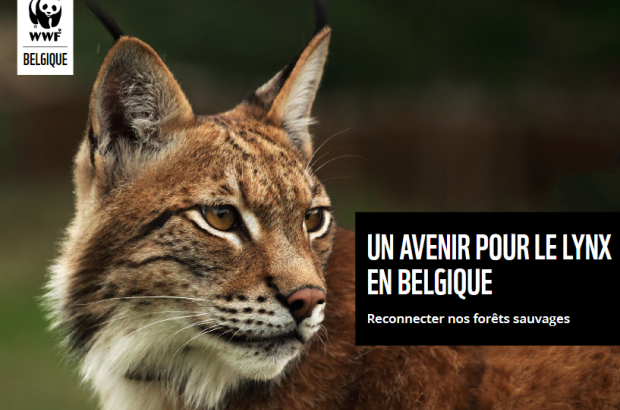- Daily & Weekly newsletters
- Buy & download The Bulletin
- Comment on our articles
Lynx could return to Belgium after 200-year absence
Belgium and its neighbouring regions could provide a suitable home for about 75 lynx in the wild, according to a new report by environmental organisation WWF Belgium.
The study was commissioned following sightings of a lynx in southern Belgium, which was first seen on a a wildlife camera in the Semois valley in August 2020.
Six months later, the lynx was spotted again, showing that the animal, categorised as a type of big cat although nowhere near as big as the lion or tiger, was not just passing through. One year later, pictures were taken again and hairs from its fur were found.
The report’s research was carried out by experts at Humboldt University, Berlin. This university was approached “when we were sure Belgium was home to a Eurasian lynx”, the WWF said.
The study reveals Belgium has two concrete hotspots where the majestic animals could live – in the western Ardennes at the frontier with the French Ardennes regional natural park and in the south-east Eifel region bordering Germany.
Based on the habitat map drawn up by researchers and according to various modelling techniques, Belgium could host an estimated 36 to 111 lynx, the university research made clear, with 75 therefore the median figure.
“We are therefore going to restore at least 100 hectares of forest edges and open areas,” WWF biologist Corentin Rousseau said.
This hilly terrains covers spacious, well-connected forest areas with differing altitudes, where little human activity would disturb the animals. The restoration would also benefit a variety of other species living there from deer to salamander, even including butterflies and bats.
“We will also restore more than 20 hectares of threatened biotopes on the slopes of the Semois Valley,” said Cécile Lesire, lynx expert for the Semois Valley National Park. “With the rugged rocky outcrops, this area is perfect for lynx to rest and breed.”
Finding a lynx in Belgium was however a surprise, the WWF said. The nearest confirmed lynx population (16 animals) lives 180km from the Semois Valley, in the Vosges and Palatinate forests between France and Germany. And, unlike wolves, lynx rarely travel such long distances.
So WWF asked Humboldt University’s geography department to investigate the natural habitats in southern Belgium that would be suitable for lynx to live. It also asked for a study on how well-connected these habitats are to existing lynx populations in neighbouring countries.
“If we want to offer the species a sustainable future in our fragmented landscapes, different populations in central and western Europe need to be connected,” Rousseau said. “Belgian forests are a nice piece of the puzzle in this respect.”
With the right conditions in place to welcome this species, notably ensuring that no motorways or main road junctions will get in the way of their progress, and enabling Belgium’s current lynx to find a mate to breed with, WWF can then check with various stakeholders if there is support for reintroducing the lynx to Belgium, as there has been in Germany.
For Rousseau, the answer is a categorical yes. The idea of going for a woodland walk and maybe seeing an animal that disappeared 200 years ago from Belgium “is the thing of dreams”, he said. He also emphasised that the lynx, which only really preys on squirrel, would mainly stay hidden in forests and not impact on human activities.
Moreover, while the wolf and the fox are pilloried not only in real life, but also in fairy tales, children’s stories and popular culture in general, the lynx has never suffered this fate, Rousseau argues.
"Lynx are very different to wolves," he said. "They rarely attack farmyard animals and if they do they would only kill one or two. They do not cause carnage in a flock."
They will not hurt humans either, he added: “We should not worry about being attacked by a lynx. Lynx are very timid animals. I have never heard anyone speak about or read myself in literature a lynx attacking a human being.”



















